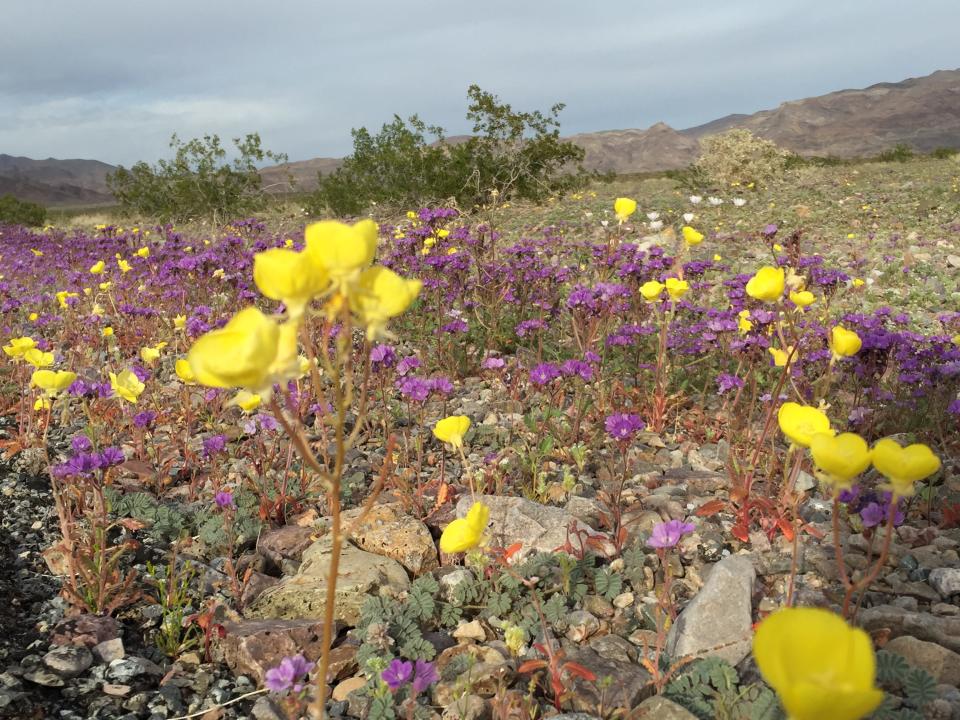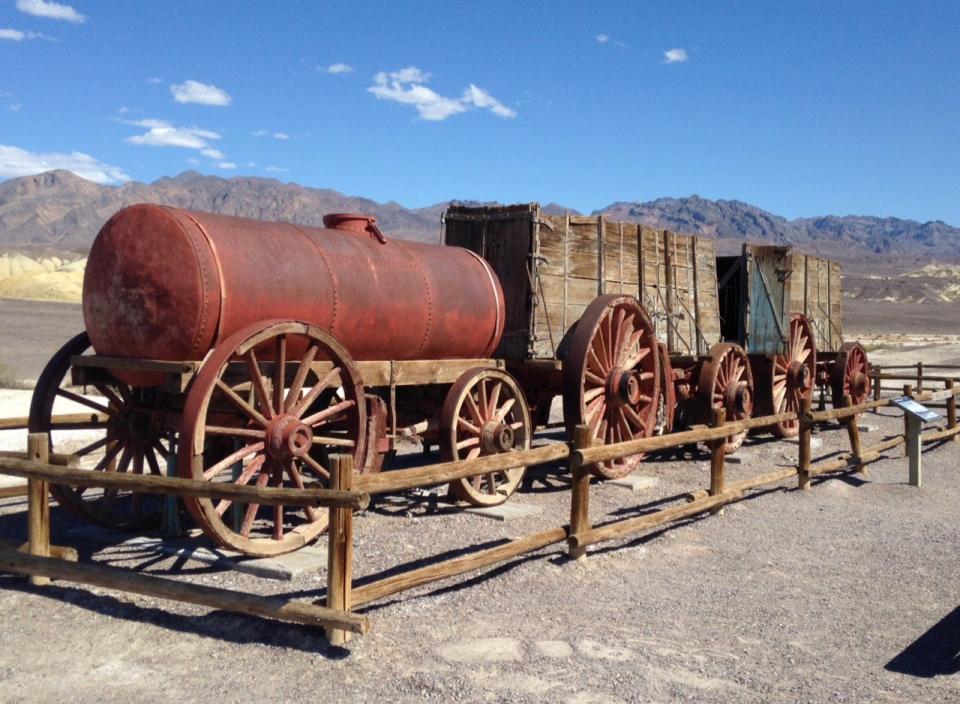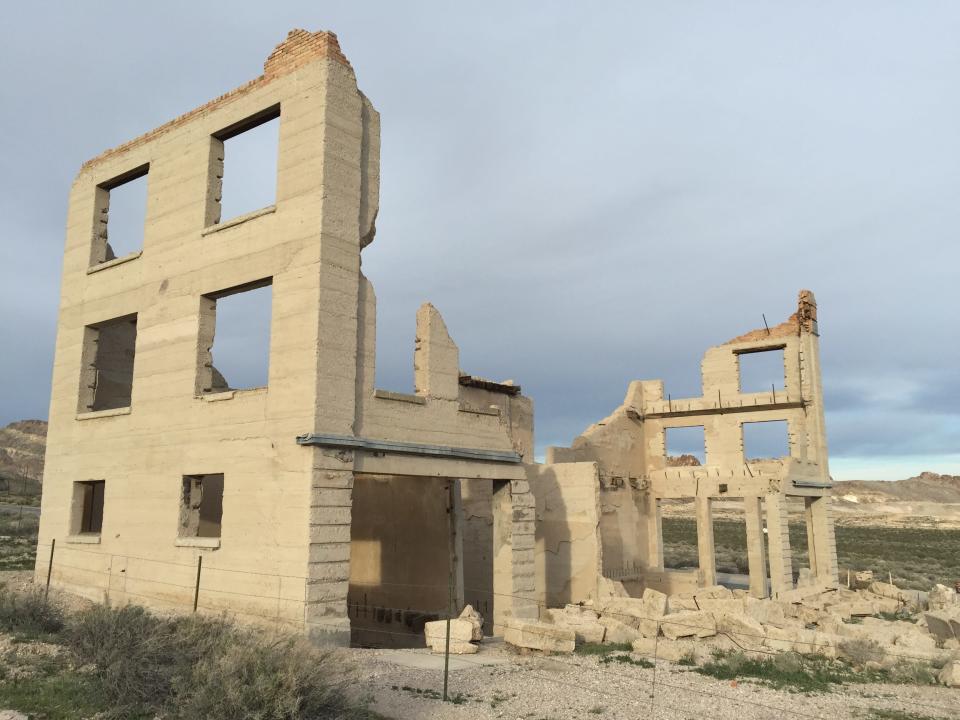Visiting Death Valley in the winter? Here's what you need to know
If recent rains and cold temperatures make you feel blue, consider a winter visit to the eastern Sierra and down to Death Valley National Park, where you’ll find pleasant winter temperatures, scenic splendor in golden canyons and wildflowers, and the most interesting of history.
Your scenic route will take you east up Highway 88 to Highway 395, then south (with passes on Highway 89, 108, and 120 closed until late spring). The drive down Highway 395 paralyzes the lofty eastern Sierra, offering many highlights. If the road is open, turn off to the Ghost Town of Bodie, perhaps the most well-preserved ghost town in the West. Just a bit further south, you’ll pass Mono Lake. Stop at the Mono Visitor Center, then take a several-mile detour eastbound on Highway 120 to the lake's south shore, where a short hike takes you to view the strange towers, looming like ghost pirate ships from this prehistoric lake.
For lunch, stop, choose Mammoth Lakes, and one of our favorites, Mammoth Brewing Company, and the adjoining Eatery, offering local vibe, great salads, pizza with goat cheese on flatbread, and other delectables – Yum! The town lies just below the West’s big ski area, Mammoth Mountain, which usually runs deep into springtime or even summer for skiing and boarding die-hards.

Back on Highway 395, stop at Manzanar National Monument, the World War II resettlement camp. That was the wartime home to well over 10,000 Japanese Americans and nationals – including many from the Stockton area. Several buildings are preserved, including the old gymnasium and re-created dormitories sharing the melancholy stories of incarcerated Japanese citizens. Not emblematic of our nation’s finest hour.
Southbound on 395, you’ll pass through Lone Pine with a selection of inexpensive motels, decent restaurants, and the lovely Alabama Hills area just west of the city. Mount Whitney looms 14,494 feet in the distance and provides the backdrop for scores of Western movies filmed in the Hills; take a tour; a short or longer hike takes you to places like Mobius Arch, making for a bonus in this beautiful area; it’s also BLM land, offering free, dispersed camping.
From Lone Pine, follow Highway 136 into Death Valley. The park got its name during the 1849 California gold rush when an immigrant wagon train, hoping to save miles, cut across the arid valley and suffered a fatality. Departing the valley, one of the prospectors looked back, declaring, “Goodbye, Death Valley, “ and the name stuck. You’ll enter the national park at Panamint Springs and then move onto Stovepipe Wells at sea level, where the land continues to drop downward, eventually reaching Badwater Basin, at 282 feet below sea level, the lowest point in the US.
Make the Death Valley Visitor Center a stop to discover the best mountain biking, hiking, and wildflower viewing destinations. You’ll also get a feel for the park’s variety of campgrounds, most of them first-come, first-served, and lodging accommodations for those who don’t want to camp.
For campers, an earlier option is Stovepipe Wells, where just a quarter mile away is the 3-mile dusty road up to Mosaic Canyon, a hiking destination, taking in a gold, purple, and orange-hued desert canyon with polished marble walls that serpentine their way into the arid desert mountains. Another is our favorite campground, Texas Springs, which offers more traditional campsites in the rolling hills of the park's eastern side. Add location related to nearby lodging.
If you’re a wildflower nut, check the website desertusa.com, offering frequent weather updates and predictions. Wildflower blooms depend on recent rains, daytime sunshine and temperatures, and southern exposure. Still, you’ll likely find wildflowers sprinkled over miles of desert moraine, with Desert Lantana, Pink Five-spot, California Gold, and other wildflowers throughout the park.

Death Valley was home to indigenous peoples thousands of years ago, and the gold rush brought more recent settlers. Silver was discovered in the park in 1873, causing Panamint City to swell to more than 5000 residents. After silver played out, "white gold," borax, was discovered. A stop at the park’s Harmony Borax Works reveals the refinery and huge 20 mule-team wagons operated from 1883–88.
Gold was found within the park; the Keane Wonder Mine is open to exploration, a gold mine that boomed from 1907 to 1912, producing over $1 million in gold inside the park. In 1904, gold was discovered on the park’s east side, leading to the last real American gold rush. Rhyolite, on the park’s eastern edge and worth the visit, is one of the more interesting ghost towns in the West. The town quickly expanded with thousands of miners, and several roads and a railroad were built into the district; a financial failure led to the end of the era by 1912.

Don’t miss the park’s points of interest, including Badwater Basin, 282 feet below sea level, and Golden Canyon – just a short hike off Highway 190. Hike the canyon in late afternoon when the setting sun offers spectacular colors and shadows. South is Natural Bridge, just off the main road, where another short hike takes you to this natural wonder. And, tour Mesquite Flat Sand Dunes, a vast sandy desert expanse, wonderful for photo taking.
For an extended trip, continue south to Joshua Tree National Park and Anza Borrego State Park, two additional lovely winter destinations; more on those parks in future features! With the recent atmospheric river inundating southern California, check the parks’ websites for trip planning.
Contact Tim, tviall@msn.com. Happy California travels!
Information
Anza Borrego State Park, parks.ca.gov/?page_id=638; Joshua Tree National Park, nps.gov/jotr; Death Valley National Park , nps.gov/deva.
This article originally appeared on Visalia Times-Delta: Visiting Death Valley in the winter? Here's what you need to know

